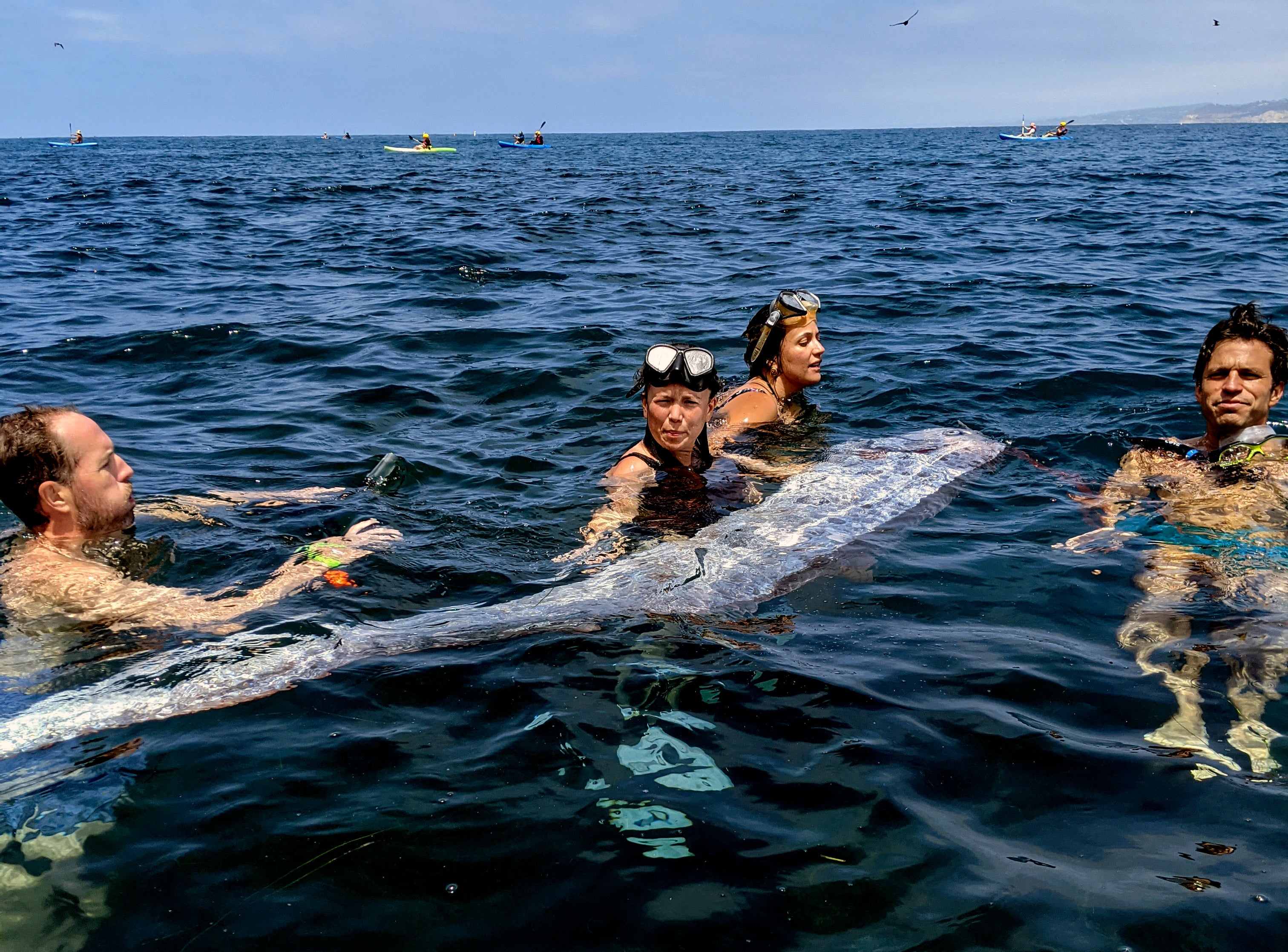Scientists stumped as rare deep sea ‘doomsday serpent’ found in California
The fish ave a mythical reputation as predictors of natural disasters or earthquakes
A rarely seen mystery deep sea fish found floating on the ocean surface off the San Diegocoast has stumped scientists.
The creature that resembles a serpent was brought ashore for study, marine experts said.
The silvery, 12-foot-long (3.6-meter) oarfish was found last weekend by a group of snorkelers and kayakers in La Jolla Cove, north of downtown San Diego, the Scripps Institution of Oceanography said in a statement.

It's only the 20th time an oarfish is known to have washed up in California since 1901, according to institution fish expert Ben Frable.
Scripps noted that oarfish, sometimes known as doomsday fish, have a mythical reputation as predictors of natural disasters or earthquakes, although no correlation has been proven.
Oarfish can grow longer than 20 feet (6 meters) and normally live in a deep part of the ocean called the mesopelagic zone, where light cannot reach, according to the National Oceanic and Atmospheric Administration.

Swimmers brought the La Jolla Cove oarfish to shore atop a paddleboard. It was then transferred to the bed of a pickup truck.
Scientists from NOAA Southwest Fisheries Science Center and Scripps planned a necropsy on Friday to try to determine the cause of death.
In 2013, when two oarfish washed up onto Californian beaches, scientists said they may have died a result of seismic activity under the seabed that occurs days or weeks before an earthquake.

Rachel Grant, a lecturer in animal biology at Anglia Ruskin University in Cambridge, said at the thime that there might be some truth in the ancient Japanese legend that the appearance of oarfish precedes an earthquake.
“It’s theoretically possible because when an earthquake occurs there can be a build-up of pressure in the rocks which can lead to electrostatic charges that cause electrically-charged ions to be released into the water,” Dr Grant said.
“This can lead to the formation of hydrogen peroxide, which is a toxic compound. The charged ions can also oxidise organic matter which could either kill the fish or force them to leave the deep ocean and rise to the surface,” she said.
Another possibility is that prior to an earthquake there is a release of large quantities of carbon monoxide gas, which could also affect oarfish and other deep-see creatures, Dr Grant said.
“The geophysical processes behind these kinds of sighting can happen before an earthquake. I will be watching California closely over the next couple of weeks,” she added.
Subscribe to Independent Premium to bookmark this article
Want to bookmark your favourite articles and stories to read or reference later? Start your Independent Premium subscription today.

